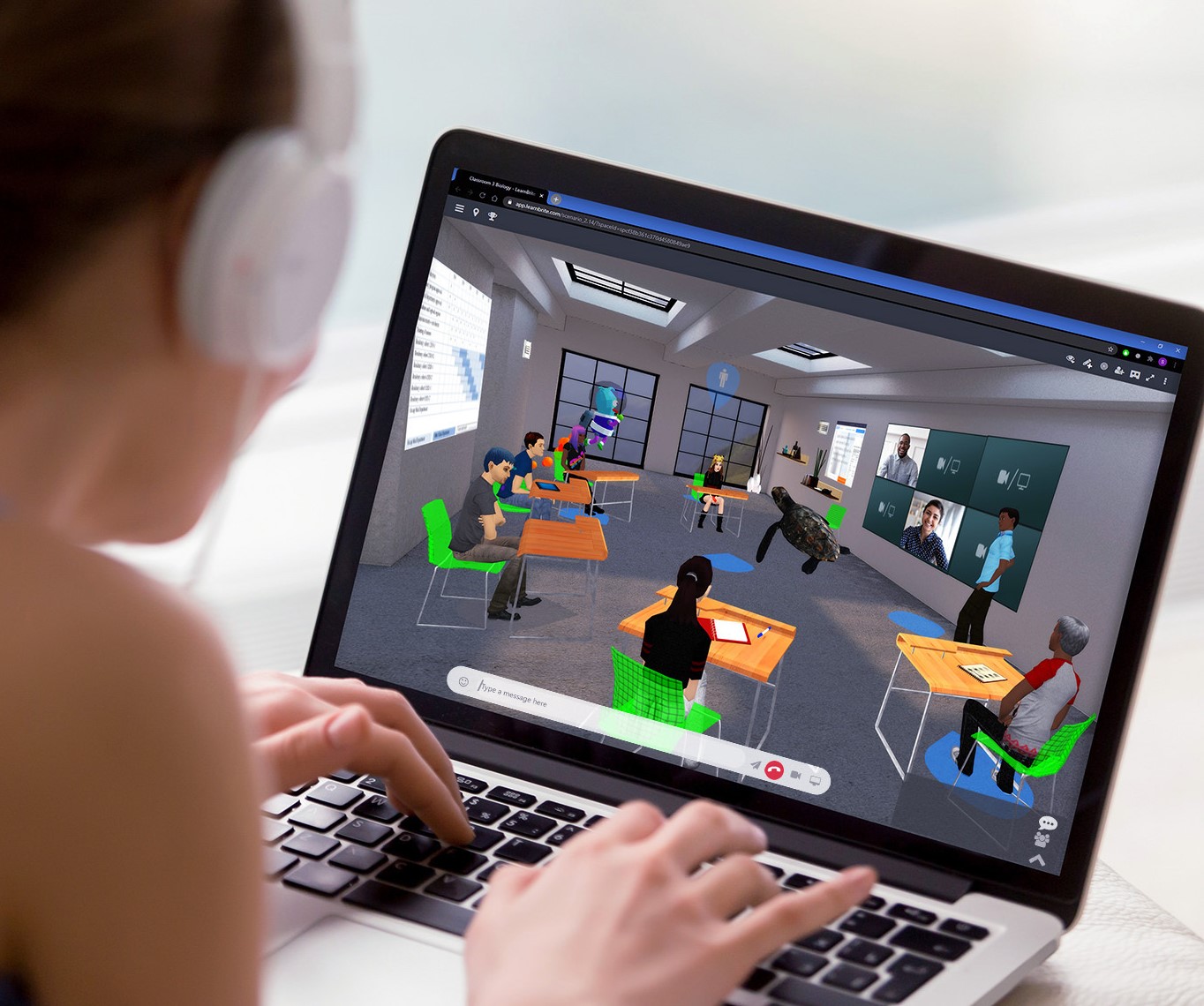As the eLearning industry continues to evolve, gamified elearning examples are becoming increasingly popular for their ability to engage learners and promote knowledge retention. This blog post will explore various examples of how organizations have successfully integrated gamification into their learning experiences.
We’ll start by discussing two corporate training programs incorporating game mechanics: The Open University’s scenario-based approach and EI Design’s onboarding program for customer care teams. Next, we’ll delve into boosting engagement rates through gamification techniques such as EdApp’s “Next in Order” virtual site simulations and achievement badge with leaderboards.
Finally, our exploration of innovative applications of gamified elearning examples goes beyond traditional workplace settings with a look at the Holocaust Memorial Museum’s augmented reality-enhanced exhibit experiences and Duolingo’s language-learning app utilizing achievement badges. Stay tuned to discover how these diverse approaches can inspire your instructional design projects.
Table of Contents:
- Gamified eLearning in Corporate training
- The Open University’s scenario-based approach with gaming mechanics
- EI Design’s onboarding training program for customer care teams
- Boosting Engagement Rates through Gamification
- Innovative Applications of Gamification Beyond Traditional Workplace Settings
- Frequently Asked Questions Gamified Elearning Examples
- Conclusion
Gamified eLearning in Corporate training
Incorporating game-like elements into corporate training programs has proven effective in improving user engagement, increasing retention rates, and making learning more enjoyable for employees. Examples of gamified elearning can be found across various industries and platforms, showcasing its potential to enhance the learning experience.
The Open University’s scenario-based approach with gaming mechanics
The Open University uses a gamification approach that combines scenario-based learning with gaming mechanics to create immersive experiences for its learners. This method encourages problem-solving skills while providing an engaging way to achieve learning objectives. VR tech has been employed to bolster the immersive learning experience, allowing learners to investigate various circumstances and settings within their course of study.
EI Design’s onboarding training program for customer care teams
EI Design’s innovative onboarding training program incorporates gamified assessments designed specifically for customer care teams. By using a mix of game mechanics such as earning points, unlocking levels, and competing against peers on leaderboards, new hires are motivated to complete tasks efficiently while gaining valuable knowledge about company policies and procedures. This approach helps increase employee engagement and drives behavioral change through friendly competition among team members.
Gamified eLearning in Corporate training has proven to be an effective way of engaging employees and helping them develop the necessary skills for their roles. Let us explore how gamification can enhance engagement rates through virtual simulations and leaderboards.
Unleash the full potential of your Metaverse with LearnBrite 100+ integrations, seamlessly connecting with popular tools such as Zoom, Hopin, Cornerstone OnDemand, Articulate, Slack, and more, amplifying your virtual experiences with the tools you already know and loveGamified eLearning is an effective way to improve user engagement and retention rates in corporate training. Check out these examples. #elearning #gamification #corporatetrainingClick to Tweet
Boosting Engagement Rates through Gamification
Incorporating gamified elements into eLearning platforms can significantly drive employee engagement rates over time. Using game mechanics, such as leaderboards or badges, learners are motivated to participate actively in the learning process and achieve their learning objectives. Real rewards offered through apps like EasyApp’s Corporate Learning Leaderboards further motivate learners, while course completion certificates provide recognition that can be shared on social media platforms.
EdApp’s “Next in Order” Virtual Site Simulations for Heavy Machinery Industries
EdApp, a mobile-first microlearning platform, offers an innovative example of how gamified assessments can enhance the learning experience for employees working with heavy machinery. Their “Next in Order” virtual site simulations allow users to practice operating complex equipment within a safe, controlled environment. This approach not merely assists in cultivating problem-solving aptitudes but also encourages conduct transformation by delivering instant feedback and potentialities for progress.
Achievement Badges and Leaderboards to Foster Friendly Competition
Friendly competition is another powerful motivator for boosting engagement rates within eLearning programs. By incorporating achievement badges and leaderboards into your courses, you encourage participants to strive towards better performance levels while creating a sense of camaraderie among team members.
- Virtual Reality (VR) & Augmented Reality (AR): These technologies offer immersive experiences that make training more engaging and memorable than traditional methods alone could ever achieve. Examples include LearnBrite’s no-code platform, which allows instructional designers to create interactive 3D scenarios for various learning purposes.
- Progress Tracking: Learners can easily monitor their progress through visual representations, such as charts or graphs, which help them stay motivated and focused on achieving their goals.
- Earn Points: By assigning point values to specific tasks or activities within a course, you encourage learners to complete assignments and participate in discussions. This gamification approach fosters an environment where employees feel rewarded for their efforts and are likelier to remain engaged throughout the training process.
Incorporating these elements into your eLearning courses boosts engagement rates and helps create a more enjoyable learning experience overall. By leveraging game mechanics and other innovative technologies like virtual reality or augmented reality, instructional designers can develop immersive content that effectively meets the needs of today’s modern workforce.

By incorporating game elements such as virtual site simulations, leaderboards and achievement badges into e-learning courses, organizations can significantly boost engagement rates among their learners. Furthermore, innovative gamification applications beyond traditional workplace settings are being explored through augmented reality experiences and language learning apps.
Key Takeaway:
This project aims to develop a no-code platform for creating immersive 3D learning scenarios that can be used for various purposes, such as employee onboarding, soft skills training, and gamified learning. The focus topic is gamified elearning examples which are interactive and engaging ways to deliver educational content.
Innovative Applications of Gamification Beyond Traditional Workplace Settings
While gamified eLearning has significantly impacted corporate training, its potential extends far beyond the traditional workplace setting. Organizations use game-like features to create immersive learning opportunities to nurture empathy, sharpen problem-solving capabilities, and inspire users to persist in their educational pursuits.
Holocaust Memorial Museum’s AR-enhanced exhibit experiences
The Holocaust Memorial Museum is one example of an institution leveraging augmented reality (AR) technology alongside gamified storytelling methods. By incorporating AR into their exhibits, visitors can engage with victims’ stories on a deeper level and gain a more profound understanding of historical events. This innovative approach demonstrates how combining cutting-edge technology with engaging narratives can lead to transformative learning experiences.
Duolingo’s language-learning app using achievement badges
Duolingo, a popular language-learning app, uses gamification elements such as achievement badges to motivate users throughout their learning journey. Learners who solve puzzles and complete lessons earn points contributing towards Wildfire badges – visual representations of progress within the platform. The friendly competition created by this system encourages users to return and strive for continuous improvement in their language skills over time.
- Elearning gamification: Duolingo’s use of game mechanics like earning points and unlocking achievements keeps learners engaged while mastering new languages.
- Gamified assessments: Holocaust Memorial Museum employs AR-enhanced exhibits which immerse visitors in victims’ stories through interactive quizzes or tasks related to the displayed content.
- Gamification approach: Both institutions demonstrate the power of incorporating game elements into learning experiences to foster behavioral change and enhance problem-solving skills.
Innovative applications of gamified eLearning, such as those employed by the Holocaust Memorial Museum and Duolingo, showcase the versatility of this approach. By combining engaging narratives with advanced technology like AR or virtual reality (VR), organizations can create immersive educational experiences that drive user engagement and promote lasting knowledge retention.
Key Takeaway:
This project aims to develop a no-code platform for creating 3D experiential learning scenarios suitable for self-paced or instructor-led courses, employee onboarding, and soft skills training. The focus is on gamified e-learning examples that can engage learners through interactive simulations and role-play activities.
Frequently Asked Questions Gamified Elearning Examples
What is an example of gamification in e-learning?
One example of gamification in e-learning is LearnBrite, a platform that engages learners with virtual reality, 3D avatars, and interactive scenarios. This immersive approach helps improve knowledge retention and encourages active participation.
What is an example of a gamified activity?
An example of a gamified activity is using quizzes with instant feedback and rewards such as points or badges. These elements can motivate learners by fostering competition, tracking progress, and recognizing their achievements.
What are some famous gamification examples?
Famous examples include Duolingo, which uses game mechanics like achievement badges to teach languages; Kahoot., a quiz-based learning platform; and Classcraft, which turns classroom management into an engaging role-playing game.
What is an example of gamification in the classroom?
An example of gamification in the classroom would be using digital leaderboards to track student performance on assignments or tests. This creates friendly competition among students while encouraging them to take responsibility for their learning outcomes.
Conclusion
Gamified elearning is an effective way to engage learners and motivate them to complete courses. With the right tools, instructional designers can create immersive experiences that will help increase knowledge retention. When implementing gamified elearning solutions, it’s important to consider challenges such as time constraints and budget limitations while considering best practices for successful implementation. By exploring different gamified elearning examples, you can identify ways of making your learning scenarios more engaging and impactful.
LearnBrite‘s browser-based platform empowers you to “futureproof” your Metaverse, granting seamless access across smartphones, tablets, laptops, and VR/AR headsets without needing downloads or software installation, ensuring unparalleled convenience for all users.
Take your learning to the next level with LearnBrite‘s immersive 3D experiential scenarios. Our platform offers various gamified elearning examples to help you develop soft skills, onboard employees and more!


Recent Comments